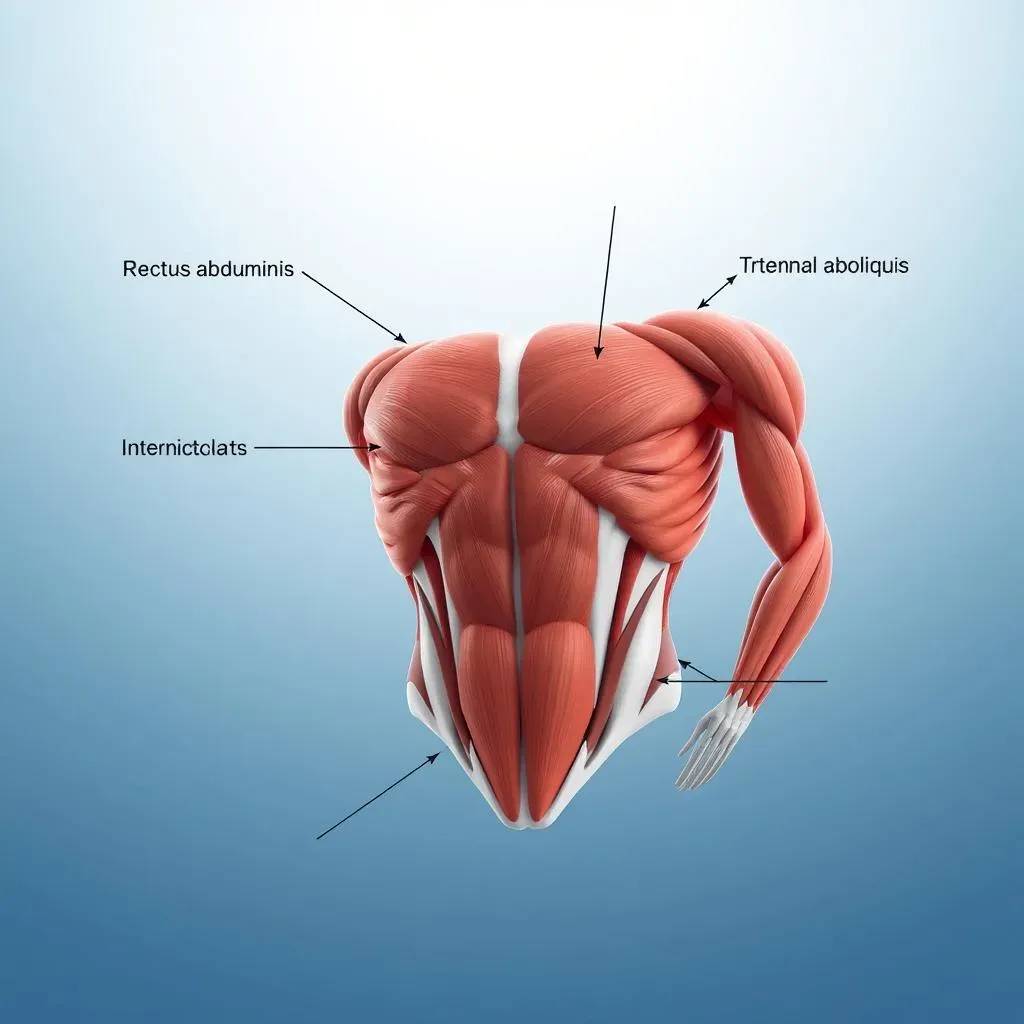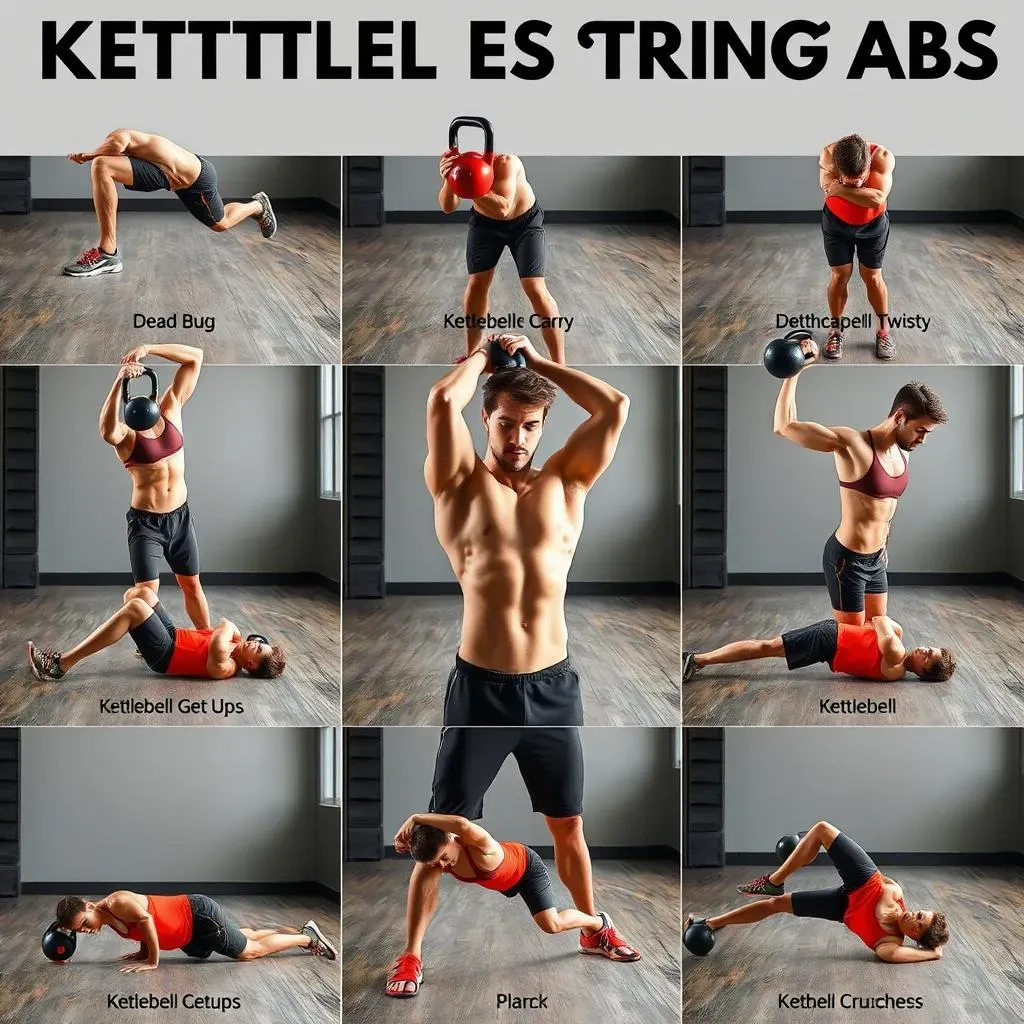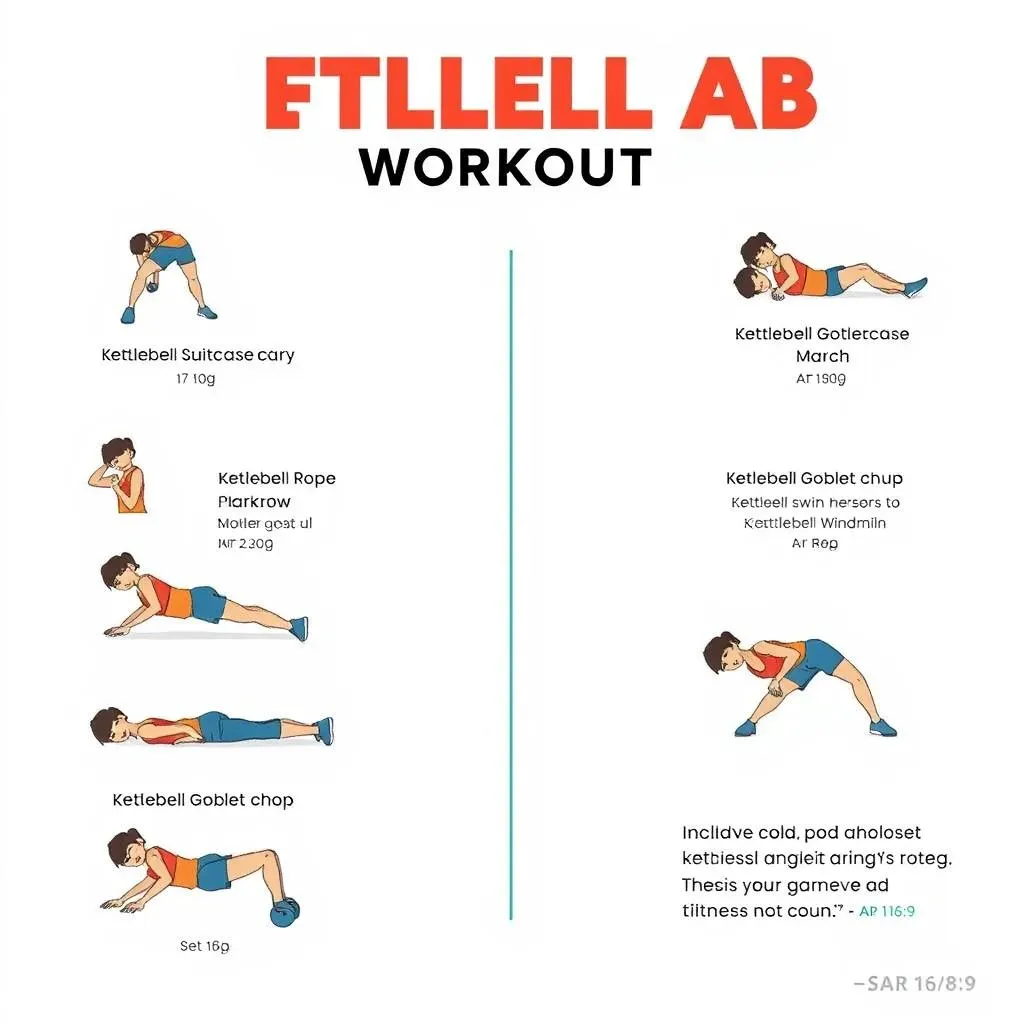Table of Contents
Forget endless crunches! If you're looking to sculpt a strong, defined core, then you've come to the right place. We're not just talking about a six-pack here; we're talking about building real, functional strength that supports your whole body. A solid core improves your posture, helps you move better, and even reduces your risk of injury. That's where kettlebells come in. They're not just for swings and squats; they're amazing tools for targeting your abs. This article will be your guide to effective workouts with kettlebells for abs, showing you nine killer exercises that will engage your core like never before. We’ll start by understanding the muscles involved, then we'll jump into the exercises with clear instructions and tips. Get ready to ditch the boring ab routines and fire up your core with some kettlebell power!
Understanding Your Core Muscles

Understanding Your Core Muscles
The Core Isn't Just About Abs
So, when we talk about "core," what are we actually talking about? It's not just your six-pack muscles. Think of your core as a muscular cylinder that wraps around your midsection. It's like the foundation of a house – everything else relies on it. It's more than just the muscles you see; it's a whole network working together to keep you stable, balanced, and strong. We have the usual suspects, like the rectus abdominis (that's the six-pack), but there are other key players that are just as important.
These deeper muscles, such as the transverse abdominis, play a crucial role in stabilizing your spine. They act like a natural weight belt, keeping everything tight and supported when you move. Ignoring these muscles is like building a house on a wobbly foundation. It might look good on the outside, but it won't be very stable and might fall apart when things get tough.
Meet the Core Crew
Let's break down the main muscles that make up your core. First, we have the rectus abdominis, the show-off muscle that gives you that washboard look. Then, we have the transverse abdominis, the deep muscle that acts like a corset, holding everything in. The internal and external obliques run along the sides of your torso, helping you twist and bend. And finally, the pyramidalis, a small muscle at the bottom of your abdomen, which assists in core stability. They all have their own job, and they all need to be strong for a truly powerful core.
It’s not just about flexing your abs in the mirror! These muscles work together to support all your movements, from picking up a grocery bag to doing a backflip (if you're into that sort of thing). Each muscle has a specific role, and they work best when they're all equally strong.
Muscle | Function |
|---|---|
Rectus Abdominis | Flexes the spine (think crunches) |
Transverse Abdominis | Stabilizes the spine and abdomen |
Internal Obliques | Rotates and flexes the torso |
External Obliques | Rotates and flexes the torso |
Pyramidalis | Assists in core stability |
Why a Strong Core Matters
Why should you care about all this? Well, a strong core isn't just about looking good; it’s about functioning well. It’s the powerhouse of your body. A strong core helps you maintain good posture, making you stand taller and feel more confident. It also helps you with everyday movements, like bending over to pick something up or carrying heavy things.
If your core is weak, you’re more likely to injure yourself, especially your lower back. A weak core can lead to back pain, poor balance, and even difficulty with simple tasks. So, taking care of your core is like giving your body a superhero upgrade. It’s the key to unlocking better movement, strength, and overall well-being.
"The core is the link between the upper and lower body. A strong core is essential for almost every movement we make." - Anonymous Expert
Nine Kettlebell Exercises for Strong Abs

Nine Kettlebell Exercises for Strong Abs
Kettlebell Dead Bug
Okay, let's get to the fun part – the exercises! First up, we've got the Kettlebell Dead Bug. This isn't your typical ab crunch; it’s a sneaky way to work your core. Lie on your back with your arms extended straight up towards the ceiling, holding the kettlebell in one hand. Your knees should be bent at a 90-degree angle, hovering above the ground. Now, slowly lower the opposite arm and leg towards the floor, keeping your lower back pressed against the ground. It's like you're trying to touch the floor with your heel and your hand at the same time, but without actually touching it. It's all about control here, not speed.
The goal is to keep your core engaged and prevent your lower back from arching. This might feel easy at first, but trust me, after a few reps, you'll feel your core working hard. Think of it like a controlled fall – you're resisting the urge to collapse. Start with a light kettlebell to get the hang of the movement, and then you can slowly increase the weight as you get stronger. Make sure to switch sides to work both sides of your core equally!
Kettlebell Suitcase Carry
Next up, we have the Kettlebell Suitcase Carry. It might sound simple, but don't let it fool you. This move is all about resisting the pull of the weight and keeping your core solid. Stand tall with a kettlebell in one hand, just like you're carrying a suitcase. Now, walk slowly, keeping your shoulders level and your core tight. It's like you're trying to balance a stack of books on your head while walking.
You should feel your obliques working hard to keep your body from tilting to one side. Avoid leaning towards the side where you're holding the weight; instead, imagine you're trying to stay perfectly straight. This exercise is great for building functional strength, the kind you need for everyday activities. Start with a lighter weight and focus on maintaining good form, then increase the weight as you get stronger. The suitcase carry is also a great way to improve your grip strength and overall stability.
Exercise | Target Muscles | How to do |
|---|---|---|
Kettlebell Dead Bug | Rectus Abdominis, Transverse Abdominis | Lie on your back with a kettlebell in one hand, lower the opposite arm and leg towards the floor. |
Kettlebell Suitcase Carry | Obliques, Core Stabilizers | Stand tall with a kettlebell in one hand, walk slowly while keeping your core tight. |
Putting It All Together: Your Kettlebell Ab Routine

Putting It All Together: Your Kettlebell Ab Routine
Alright, so you've got the lowdown on the core muscles and a couple of killer kettlebell moves. Now, let's talk about how to weave these exercises into a solid routine. You don't need to spend hours in the gym; a few well-chosen exercises done with good form are way more effective than a marathon of sloppy reps. I recommend starting with 2-3 sets of 8-12 repetitions for each exercise. Remember, it's not about how much weight you can lift, but about how well you can control the movement.
When you’re just starting out, focus on mastering the form first. It’s like learning to play a musical instrument – you wouldn’t start with a complicated piece before you know the basics, right? So, go slow, feel the muscles working, and don’t be afraid to use a lighter weight. Once you feel comfortable with the movements, you can increase the weight or the number of repetitions to continue challenging yourself. Consistency is key here! Aim for 2-3 workouts per week, giving your body enough time to recover between sessions.
Routine | Sets | Reps |
|---|---|---|
Kettlebell Dead Bug | 2-3 | 8-12 |
Kettlebell Suitcase Carry | 2-3 | 8-12 each side |
Kettlebell Goblet March | 2-3 | 8-12 each side |
Kettlebell Woodchop | 2-3 | 8-12 each side |
Plank Row | 2-3 | 8-12 each side |
Kettlebell Goblet Squat | 2-3 | 8-12 |
Kettlebell Swing | 2-3 | 15-20 |
Kettlebell Windmill | 2-3 | 5-8 each side |
Kettlebell Turkish Get Up | 1-2 | 1-2 each side |
And most importantly, listen to your body. If something feels off, stop and adjust. Don't push through pain, that's just your body telling you to take a break. It's also a good idea to warm up before you start your workout. Just like you wouldn’t start a car in the dead of winter without letting the engine warm up a bit, you shouldn't jump into a workout without getting your muscles ready. So, do some light cardio and dynamic stretching to get your blood flowing and your muscles ready for action. Finally, cool down with some static stretches after your workout.